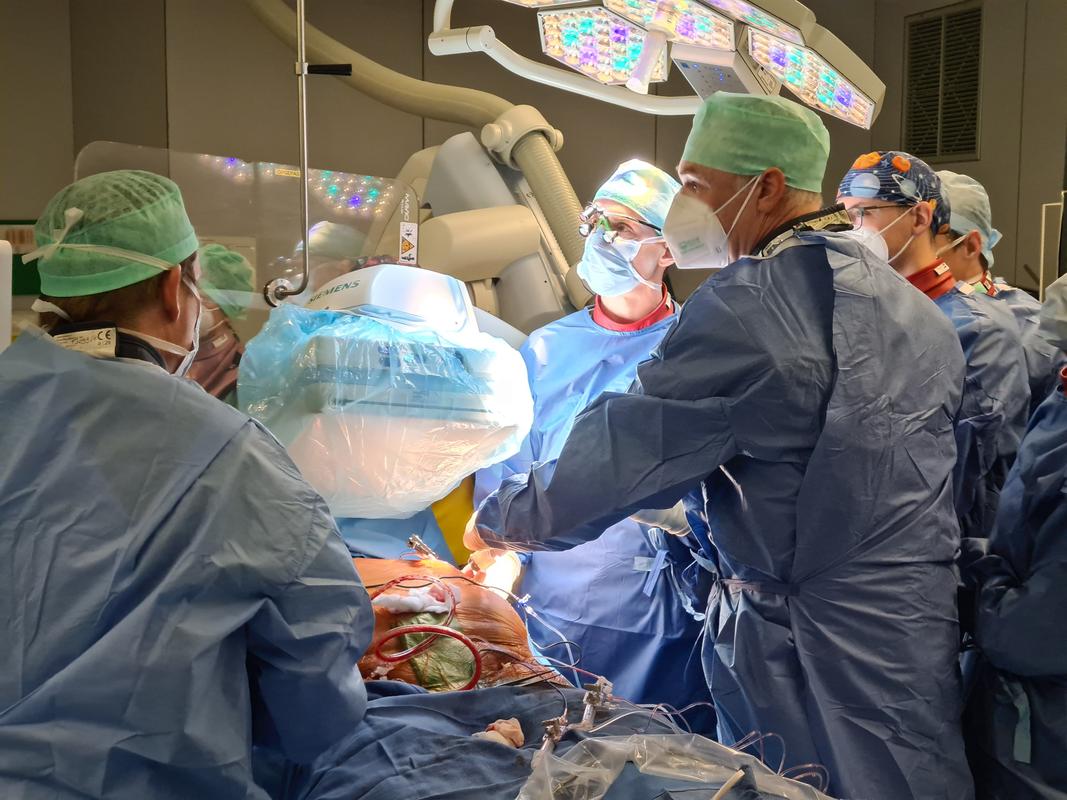Recently UZ Leuven physicians have replaced the mitral valve of the heart for the first time via a minimally invasive catheter procedure. For the aortic valve this technique has been around for some time, but this is a lot more challenging for mitral valves, which are anatomically harder to get to and more difficult to treat.
Specifically it concerns two new types of prosthetic valves. One is implanted directly in the heart via a small incision under the left breast (Tendyne® valve), the other is inserted from the groin to the heart through the vein and artery (HighLife® valve).
Prof. dr. Christophe Dubois, cardiologist at UZ Leuven: “These new techniques for replacing the mitral valve are ground-breaking, because until recently there was no alternative for patients that do not qualify for cardiac surgery. We’re talking for instance about fragile people or people with other disorders which make surgery too risky or prohibitive.”
These new techniques for replacing the mitral valve are ground-breaking, because until recently there was no alternative for patients that do not qualify for cardiac surgery.Prof. dr. Christophe Dubois, cardiologist
In both cases it concerns biological valves: they consist of porcine or bovine tissue on a metal frame. This frame is so small that it fits through a tube and can expand in the heart to give the valve its final shape. Doctors expect the valves to have a lifespan of 10 to 15 years, comparable with biological valves that are implanted surgically.
International trial
The Tendyne® valve has already been approved in Europe and is commercially available. Worldwide, approximately 600 patients have received this type of heart valve. The first three Belgian patients were treated at UZ Leuven.
The HighLife® valve is still in a research phase. For this, UZ Leuven is participating in an international trial and is the first Belgian centre to implant the valve. It is the world’s 22nd patient with this type of mitral valve.
More information about heart valve disease and treatments
The heart has four valves that guide the bloodstream in the right direction, two in each half of the heart. Especially the two left-sided valves – the aortic and the mitral valve – are subjected to a lot of pressure and tend to fail earlier, because from there, the blood is forcefully pumped throughout the body.
Valve problems occur frequently, especially in the elderly. Sometimes the valve can be repaired, for example by placing a valve ring through heart surgery. Since a couple of years, a similar repair is also possible in a less invasive way by inserting clips for the mitral valve from the groin via a tube.
In cases where the valve cannot be repaired anymore, the standard treatment is cardiac surgery, replacing the diseased valve by a biological or mechanical prosthetic heart valve. Such cardiac surgery is fairly invasive and can be too risky for some patients.
For this reason cardiac specialist have developed new minimally invasive techniques to implant a prosthetic valve in the heart via a catheter through a large vein or artery, without surgery. For the aortic valve this technique has been available for some time already (TAVI: transcatheter aortic valve implantation). Now, for the first time, UZ Leuven is successfully applying a similar technique for the mitral valve in several patients.
These minimally invasive transcatheter valve replacements are being performed by a multidisciplinary team of cardiologists, cardiac surgeons and anaesthetists.

